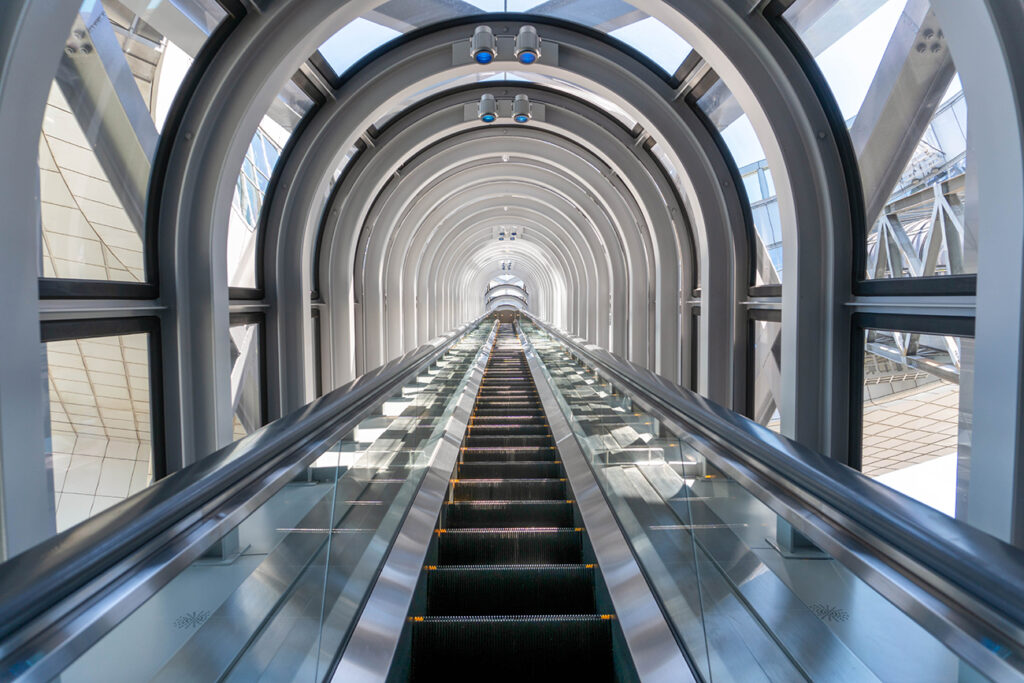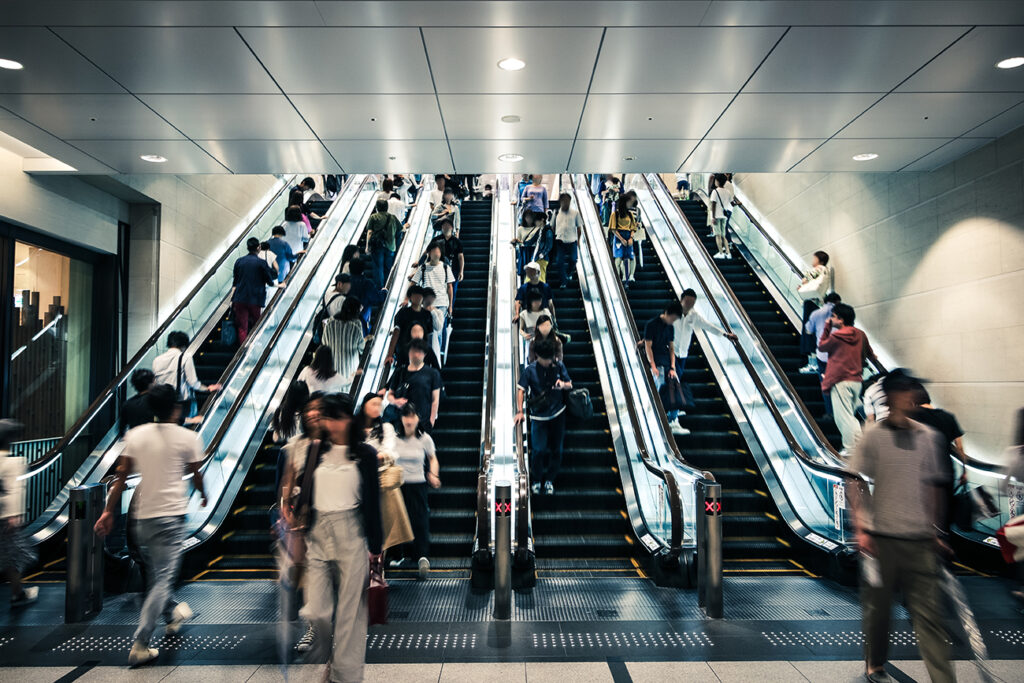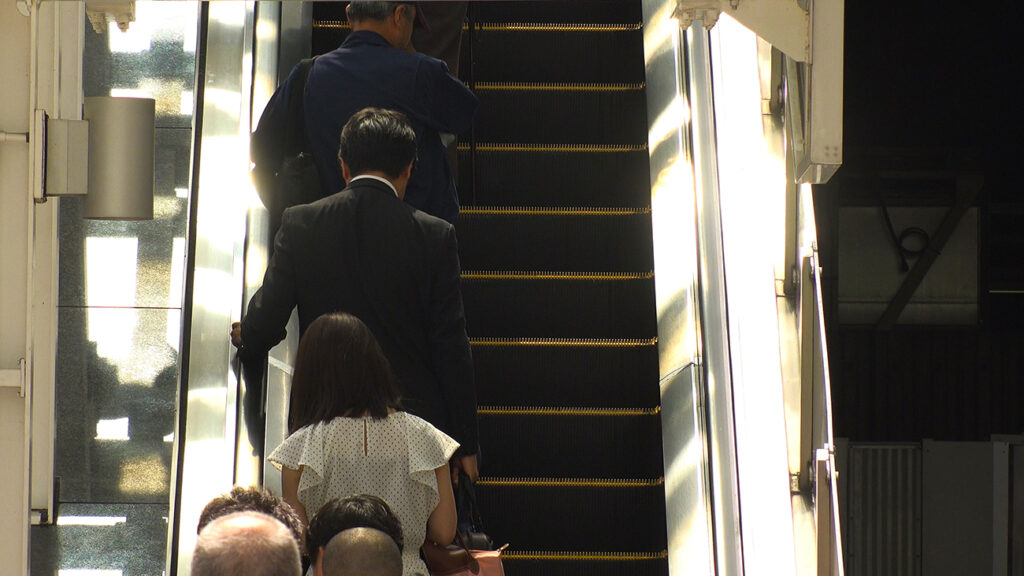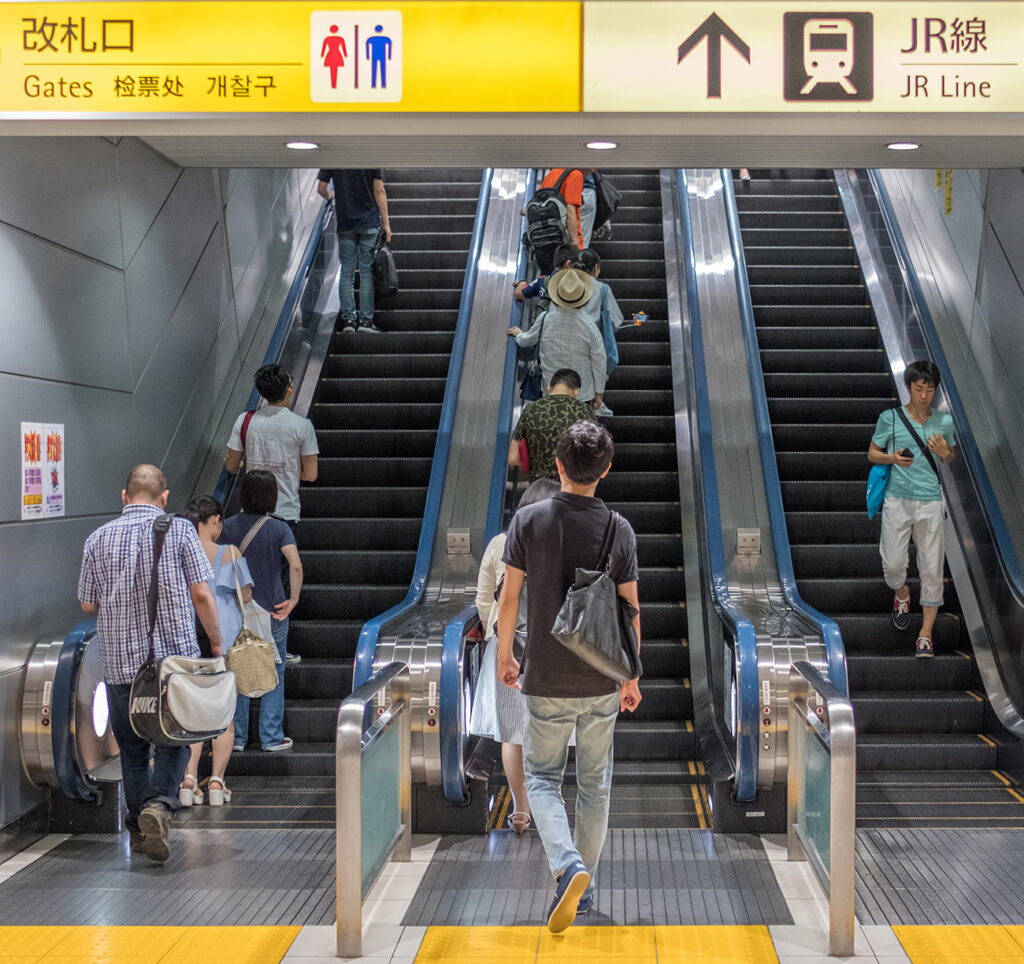
Escalator Etiquette in Japan: A Tale of Two Regions
In the Tokyo area, it’s customary to leave the right side of the escalator free for those in a hurry, similar to practices in the United States. Conversely, in the Kansai region, including Osaka, people typically keep the left side clear for those in a rush.
 Reason behind regional differences
Reason behind regional differences
The variations in escalator etiquette between eastern and western Japan stem from historical and cultural influences.
The rise of escalators
The history of escalators dates back to the mid-19th century when elevators first appeared. The need to transport more people efficiently within high-rise buildings led to the invention of escalators. The Eiffel Tower showcased one of the first escalators at the 1900 Paris Exposition, where it garnered significant attention. By 1914, Japan installed its first escalator in Tokyo during the Tokyo Taisho Exposition. Unfortunately, it was destroyed by the Great Kanto Earthquake in 1923.
Escalator etiquette evolution
The “stand on the right” rule is believed to have originated in London during World War II to improve transportation efficiency. In Osaka, during the late 1960s economic boom, Hankyu Umeda Station began encouraging people to “stand on the right,” influenced by British practices and the convenience for right-handed individuals. The 1970 Osaka World Expo further cemented this practice, making it the norm in the surrounding areas like Hyogo and Nara.
Kyoto’s unique approach
Kyoto, however, has a more flexible approach. People follow the “follow the person in front of you” rule, standing on the right and walking on the left only if someone else does so, accommodating the influx of tourists unfamiliar with local customs.
Tokyo’s natural development
In Tokyo, no official announcements or rules have dictated escalator behavior. Instead, standing on the left side has become the norm naturally. This tradition may have roots in the samurai era, where walking on the left prevented swords from clashing.
Changes for safety
Recently, there have been calls to “stand while riding” to prevent accidents, with some regions like Saitama Prefecture and Nagoya City even enacting regulations.
Navigating Japan’s escalator customs
Japan’s escalator etiquette can be complex due to regional differences. When in doubt, it’s best to follow the person in front of you.


